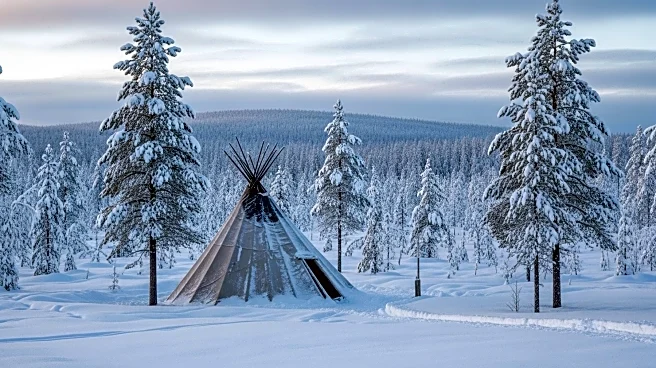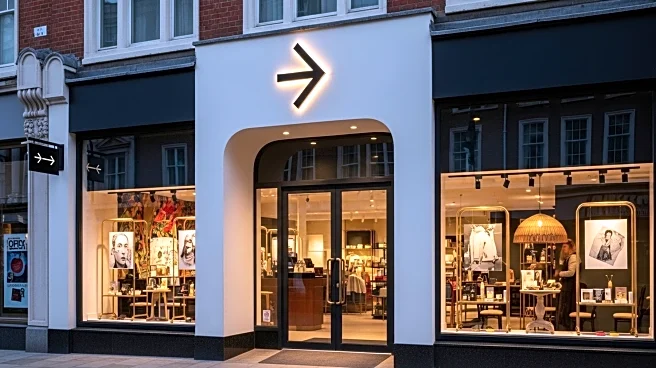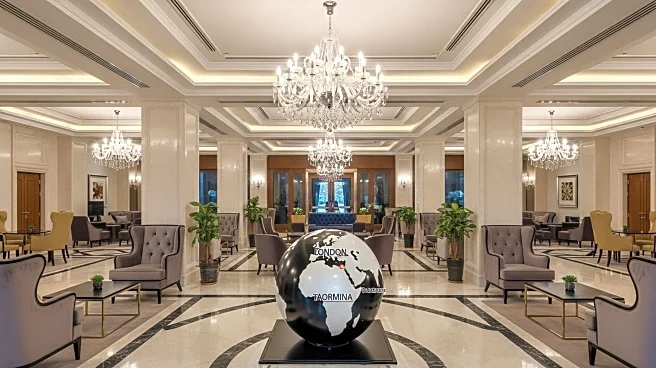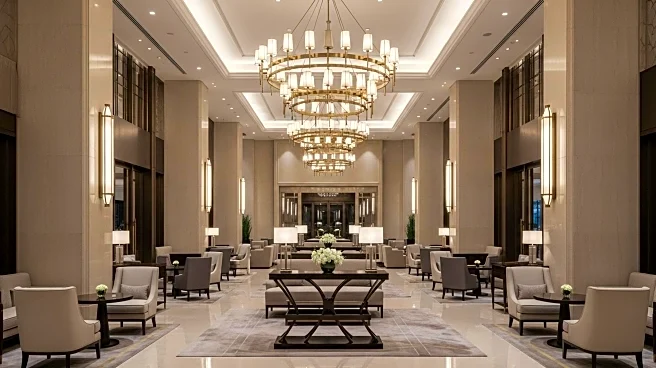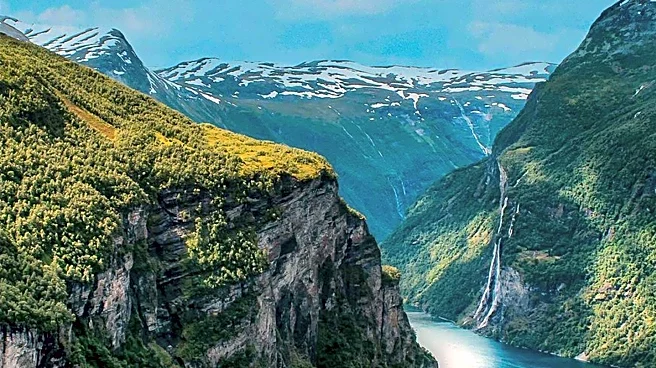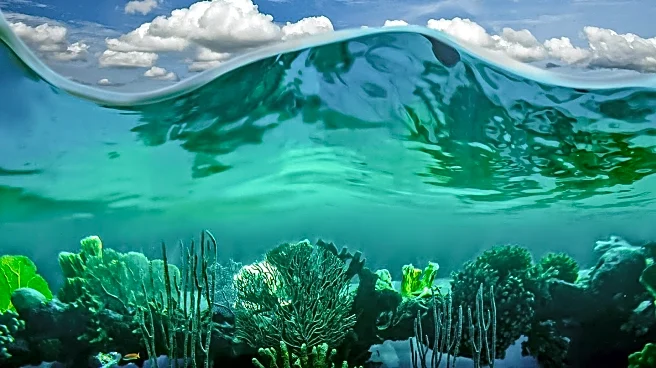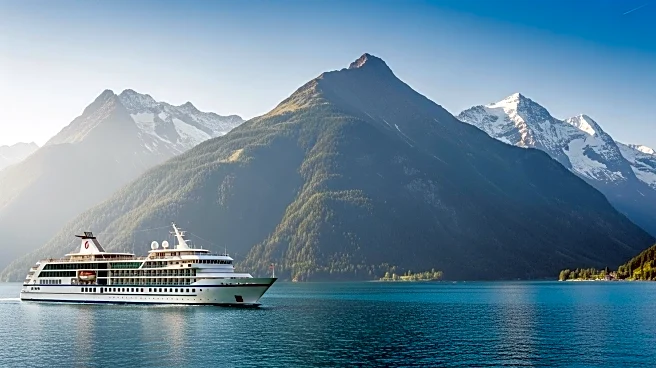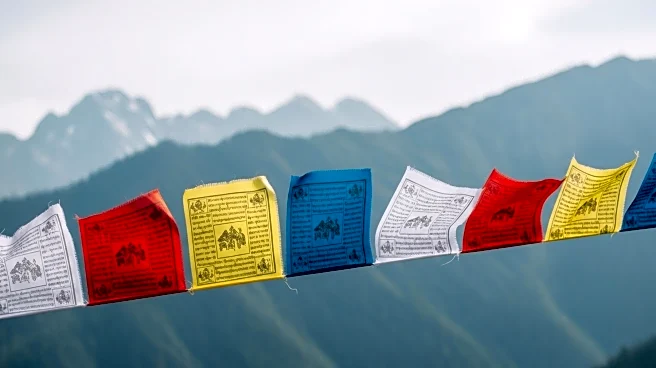What is the story about?
What's Happening?
Lapland, traditionally known as the home of Santa Claus, has seen a significant increase in tourism, with visitor numbers rising by 160% over the past 30 years. This surge has led to substantial environmental impacts, including the development of green areas equivalent to London's Hyde Park for tourism purposes. Developments such as holiday homes, ski slopes, and virtual reality experiences have been established, particularly around tourist hotspots in Finnish Lapland. The expansion has affected indigenous Sámi communities, who rely on agreements with local authorities to protect their reindeer herding pastures. The municipal council of Inari recently approved 227 cottage plots along Lake Inari, raising concerns among Sámi herders about the competition for land.
Why It's Important?
The rapid expansion of tourism in Lapland poses significant threats to its fragile ecosystem and the cultural heritage of the indigenous Sámi people. The developments contribute to biodiversity loss and ecological damage, impacting traditional practices such as reindeer herding. The tourism industry's growth has also led to increased housing prices and shortages in many areas of Lapland. Environmentalists warn that along with logging and mining, tourism development is a major threat to Europe's remaining wilderness areas. The situation highlights the need for sustainable tourism strategies that consider climate change and biodiversity.
What's Next?
The regional council of Lapland plans to introduce a new tourism strategy by 2026, which will address climate change and biodiversity concerns. This strategy aims to grow tourist centers to attract more business and vitality to the area. However, balancing economic growth with environmental preservation and cultural heritage protection remains a challenge. Stakeholders, including environmentalists and cultural activists, are likely to continue advocating for sustainable practices to mitigate the negative impacts of tourism expansion.
Beyond the Headlines
The expansion of tourism in Lapland raises ethical questions about the prioritization of economic growth over environmental and cultural preservation. The developments threaten the unique cultural heritage of the Sámi people, who have practiced semi-nomadic reindeer herding for generations. The situation underscores the broader global challenge of balancing tourism development with the protection of indigenous rights and ecosystems.
AI Generated Content
Do you find this article useful?
